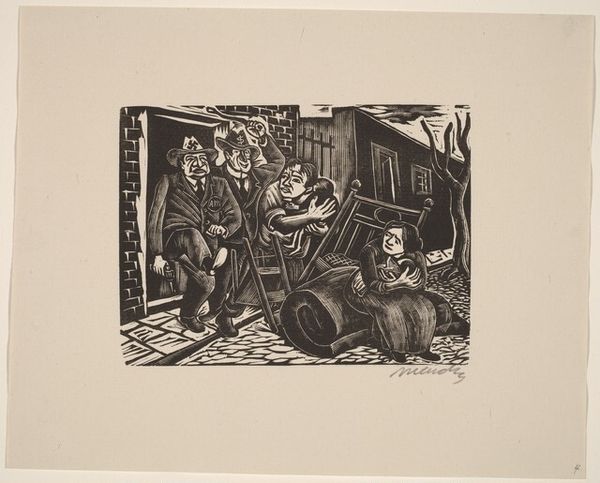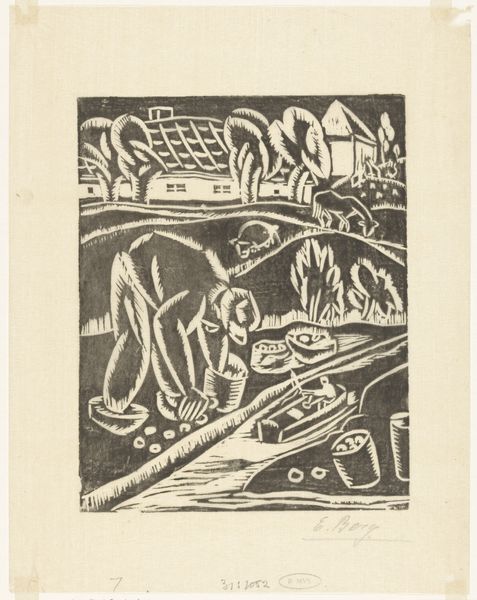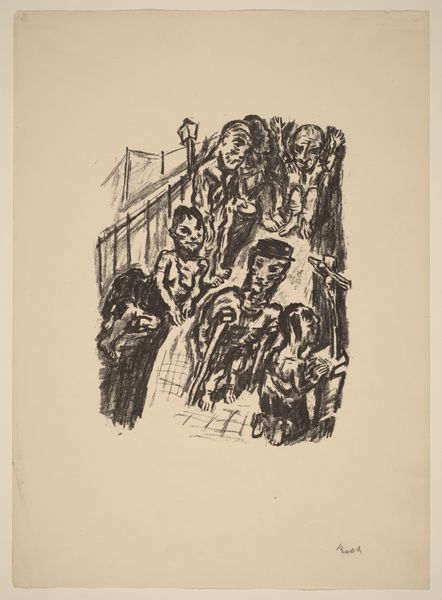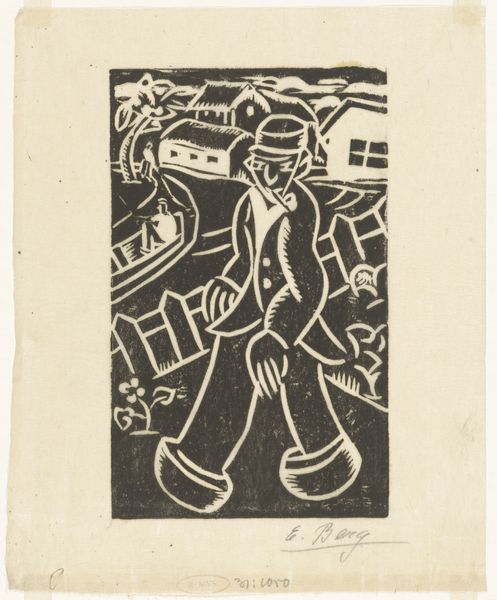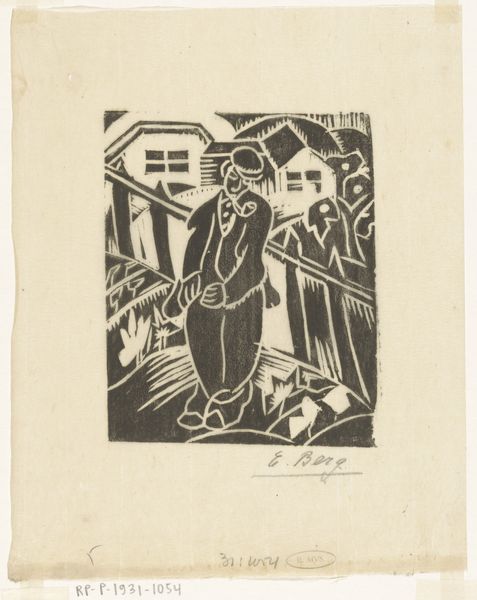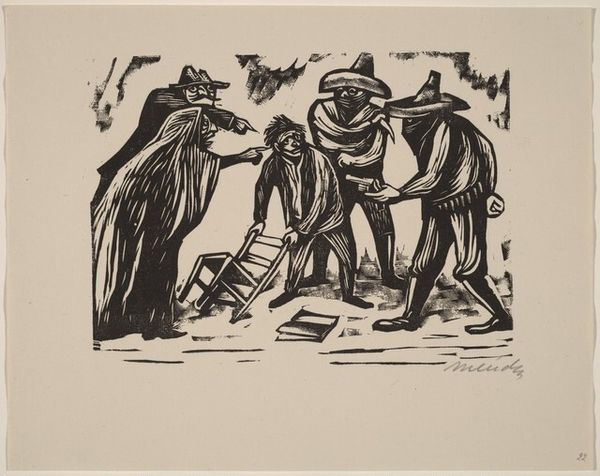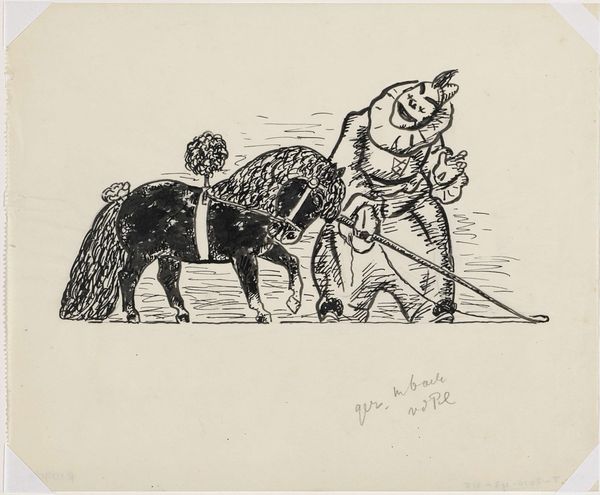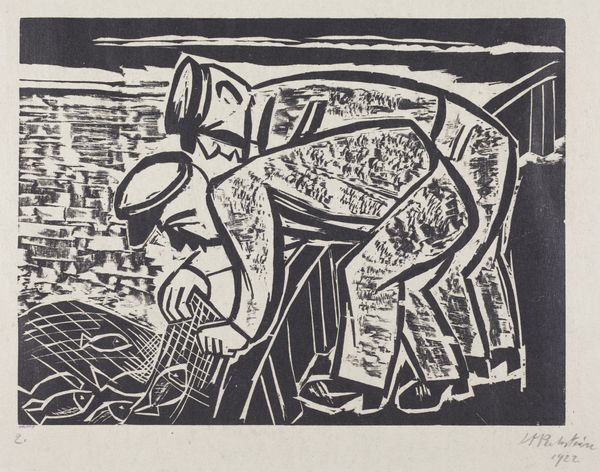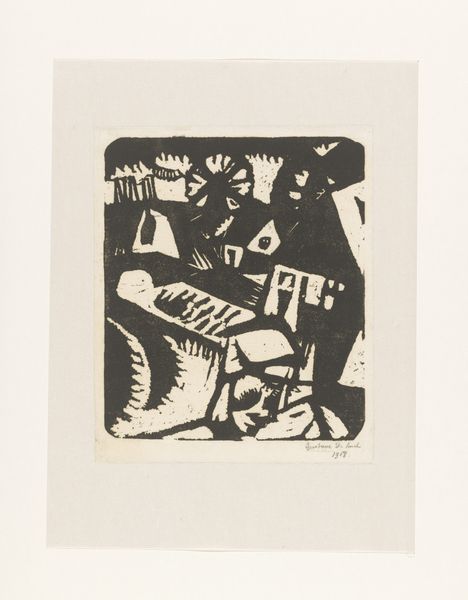
graphic-art, print, woodcut
#
graphic-art
#
ink drawing
#
narrative-art
# print
#
caricature
#
figuration
#
social-realism
#
woodcut
#
mexican-muralism
#
history-painting
Copyright: National Gallery of Art: CC0 1.0
Editor: This is "Fascism I" by Leopoldo Méndez, created in 1943. It's a powerful woodcut print, and honestly, it's pretty chilling. The stark black and white imagery and violent scenes really get to you. How do you interpret this work, especially in its historical context? Curator: The potency comes from the layering of symbols. The immediate depiction of brutality reflects the explicit violence of fascism. But consider the visual weight placed on the faceless firing squad, the civilian victims, and the dominating figure adorned with the swastika. Doesn't that iconic representation attempt to freeze a universal essence of the oppressive regime? How does the artist use visual language to translate a complex ideology? Editor: That’s a great point about the figures, almost dehumanized to represent systems of power. So, it’s less about specific people and more about representing an idea of power and those it victimizes? Curator: Precisely. And woodcut, as a medium, inherently carries symbolic meaning, doesn't it? Its history is intertwined with disseminating messages, particularly during times of social and political upheaval. Méndez harnesses this cultural memory, embedding the work within a longer lineage of resistance art. What impact does that awareness of past struggles and symbolism have on a contemporary audience viewing this today? Editor: It gives it an enduring relevance, I think. It becomes a symbol not just of that time, but of any time when similar oppressive forces arise. Thanks for your insight. I see so much more now. Curator: Indeed. It speaks volumes about cultural memory and the responsibility of images to provoke remembrance.
Comments
No comments
Be the first to comment and join the conversation on the ultimate creative platform.
